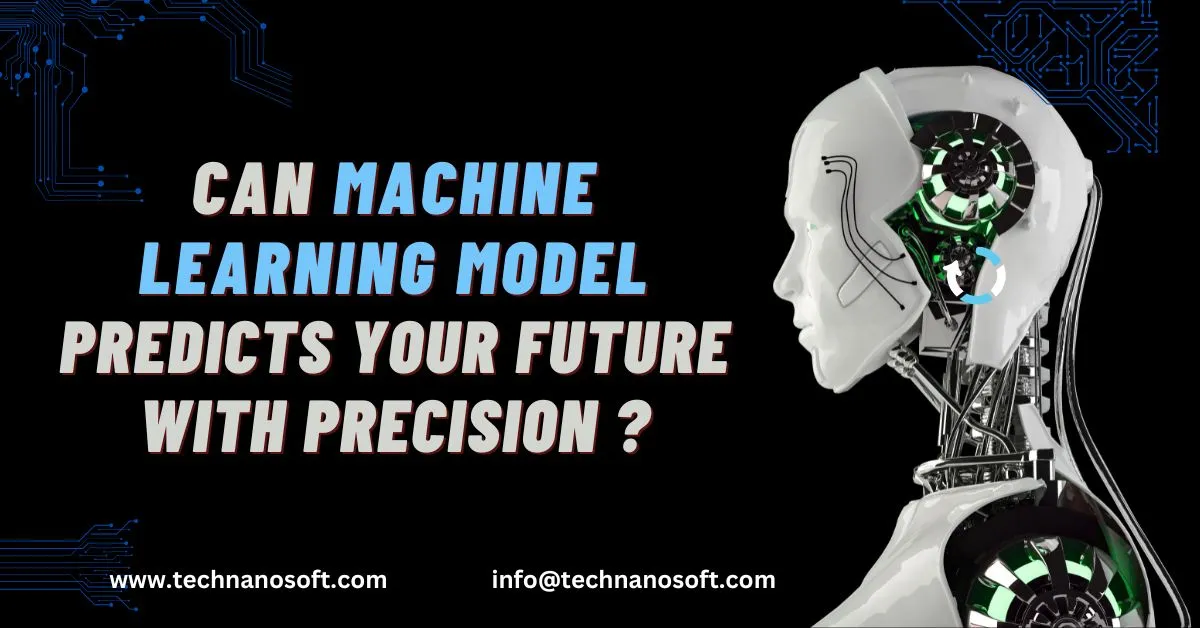Machine Learning Model Predicts Your Future With Precision

Machine Learning exists in many fields and shapes. It is a recent development to substitute the usage of human intelligence on tasks. Corporations rely heavily on these models because they have proven to be faster and more efficient than humans. Two machine learning data models are mainly implemented.
The supervised models rely on data sets that give a clear result which helps us predict what will occur next. Unsupervised models are used when it's impossible to classify the provided information and to predict what will happen; we need additional information, time, or events. To clarify things, I will provide some examples concerning the definitions I just gave you supported by Python code examples.
Predicting the future is much easier than you might think. You probably know about Black Friday and Cyber Monday, America's first and second-highest shopping days. But how do stores decide when to open their doors for these days? Various models exist, like Pivotal's Holiday Sales Prediction, an example. In this tutorial, we will build an accurate sales prediction machine-learning model with Python. The same model can use for other applications, such as hotel booking metasearch engines, tour operators' recommendation systems, etc. It relies on forecasting future values of a numerical course using past information.
How Can a Machine Learning Model Predict Your Future?
Data science and machine learning models are capable of making predictions. They are modelled in the past and use statistical techniques. This article will discuss how Python's learning model can predict your future.
What is Machine Learning?
MI Artificial intelligence (AI) is a subfield that builds systems that can learn from data, improve over time, and make independent decisions. With this learning, you can build algorithms to automate tasks such as predicting user behaviour, recognising images, or translating text into another language.
How Does Machine Learning Work?
A MI algorithm uses historical data to learn patterns and relationships between variables. Once it has learned these patterns, it can use them to predict future outcomes based on new data sets — without being explicitly programmed. For example: if you want to know what tomorrow's weather will be like in New York City, the algorithm will look at historical data from previous days with similar conditions (temperature, humidity levels, etc.) It will then determine whether tomorrow's weather will be sunny or rainy based on how those days turned out in the past.
The most important aspect of machine learning is predicting future events based on historical data. It can be anything from predicting the next word in a sentence to predicting stock market prices.
Several algorithms are used for this purpose, and they all have advantages and disadvantages. Some of them are:
Decision Trees: Used for classification and regression problems, Decision Trees work by splitting your data into different branches based on certain conditions. They're good at finding patterns in your data but can be difficult to interpret because they don't necessarily explain why something happened.
Naive Bayes - Naive Bayes is a classification algorithm that uses Bayes' theorem to calculate the probability of an event happening, which is then used to predict its category. Because it's so simple, Naive Bayes doesn't require much training data, and it's also pretty fast (although not as fast as other models). However, it doesn't work well with missing values or categorical variables (variables where each value represents a single category).
Machine Learning Models For Classification
A classification model is a predictive model that categorises things into groups based on features. The most common type of classification model is a decision tree, which outputs a probability that the input belongs to each category. Other classification models include neural networks and support vector machines (SVMs).
Machine Learning Model Management
Many artificial intelligence models in Python, such as sci-kit-learn and TensorFlow, are available. Some are good for classification tasks, while others are better suited for regression tasks like forecasting sales numbers or stock prices. Choosing the right tool for your task is important because it can lead to wasted time and money building something that doesn't work well enough for your needs.
Machine learning models are used for predictions and classification. The most common prediction model is linear regression. It's been studied extensively by statisticians, and it's relatively easy to understand.
A linear regression model is used to predict the value of a variable (the dependent variable) based on other variables (the independent variables). A typical example of this is predicting house prices based on the size of the house, number of bedrooms, and number of bathrooms.
This type of model can also use for classification problems. If each person in your data set has been classified as belonging to one of two groups (e.g., "cheap" or "expensive"), you could use a linear regression model to predict which group each new person belongs to based on their characteristics.
Models for Machine learning can be used for prediction. It is more reliable as compared to other methods, and it could predict the future. The application of these models is essential in many technical aspects.









